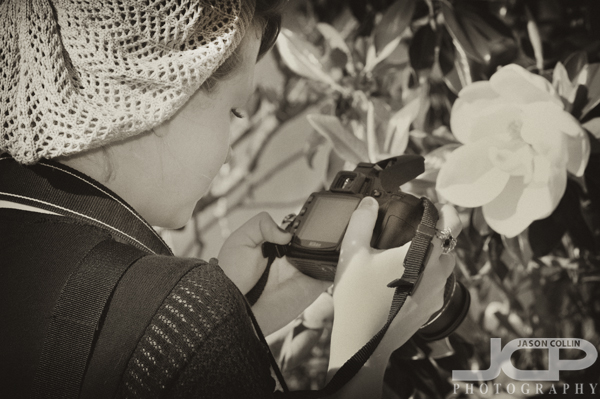 Macro photography especially requires you to check and change your settings constantly
Macro photography especially requires you to check and change your settings constantly
My second DSLR Photography lesson with my youngest student, Libby (1st lesson), was my first time to have a lesson at the Florida Botanical Gardens, which turned out to be an excellent location. We focused exclusively on macro photography this time, in particular, flowers. We must have photographed ten different kinds of flowers in two hours, as well as different colors of some types. We ran out of time before we ran out of subject material.
Now with a DSLR you really need to have a dedicated macro lens to get the best macro photography results. Unlike point-and-shoot digital cameras that are jack-of-all-trades, if you simply turn the settings dial on your DSLR to its macro mode (if it has one), this will not magically transform it into a camera capable of making a macro shot. Therefore, I have no idea why camera makers have these "presets" on lower-end DSLR cameras.
Libby did not have a dedicated macro lens, but we made due with what she had (17-50mm kit lens). Besides having a macro lens, to be able to make a macro shot like you see in magazines you need a sturdy tripod and excellent lighting, like a ring flash of some kind. Macro photography is hard.
However, it is great for getting a photographer to become obsessed with checking and changing settings, which I always tell my students to do. You might be photographing a white flower in shade and next trying to photograph a purple flower in direct sunlight. Significant settings changes are required to shoot in such varied conditions. I bet Libby's thumbs were getting sore from changing aperture, ISO and exposure compensation so much!
I had a very good time exploring the gardens with Libby during our lesson and look forward to bring more students to this exciting new DSLR photography lesson location.
